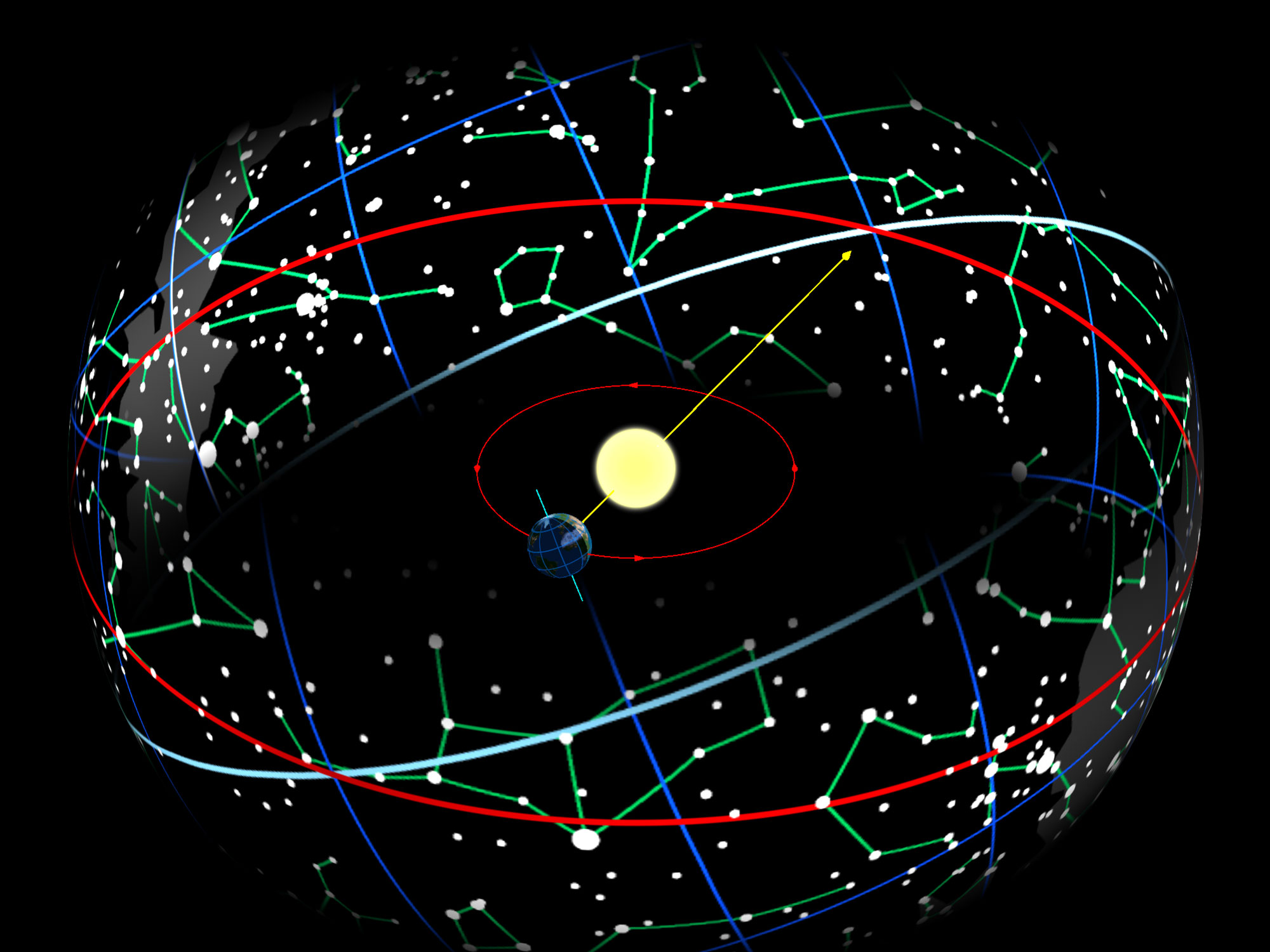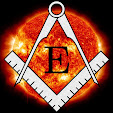While looking at a reflection of the full moon today on a slightly distorted glass window, I suddenly realized that the Yin-Yang symbol is a stylized full moon.
Wednesday, December 30, 2020
Tuesday, December 22, 2020
♃♄: 'Great Conjunction' of Jupiter and Saturn
 | |
| Google's Doodle to mark the Event |
The 7 'planets': ☉, ☾, ♂, ☿, ♃, ♀, ♄ (in week day order*), and the 12 constellations of the Zodiac: ♈, ︎♉, ︎♊, ︎♋, ︎♌, ︎♍, ︎♎, ︎♏, ︎♐, ︎♑, ︎♒, ︎♓ (in order as on the Ecliptic) give us a natural celestial clock. The zodiac signs are the face markers and the visible 'planets' the seven 'hands'.
* I never could figure out why the weekdays are ordered this particular way.
The moon completes a full zodiacal circle in 28 days*, and acts as the day-of-the-month hand. The sun moves a zodiacal sign per month, and is thus the month hand. It should be no surprise that by learning to read the hands of a clock one can make all sorts of useful predictions about periodic phenomena.
* Since 365/28 ≈ 13, 13 months and 13 zodiac signs would make more sense. However, Babylonians had problems computing interest payments with 13, and today, too many people fear the number 13, so this 'reform' is not going to happen anytime soon. Even cultures which follow a lunar calendar, like the Telugu calendar call the 13th lunar month as simply 'extra' month and don't have a name for it. Again, I don't know why.
The other visible planets have more complicated movements, with Saturn
taking the longest to complete a full cycle of the ecliptic/zodiac, and
Mars having the most obviously mysterious movement (Jupiter and Saturn also have the same mysterious or retrograde movement, but take much longer to complete). Accurate measurement
of Mars' movements by Tycho Brahe and the spiritually inspired passion to make sense of these
measurements, and thereby understand the 'mind of God', by Kepler and later Newton yielded classical physics. "As above, so below".
 | |
| Kepler's initial solar system model (Mysterium Cosmographicum) based on the 5 perfect solids was inspired by Kepler's deeply held belief that Gott's creation had to be perfect in every way. In this view, the reason there are 5 planets is because there are 5 perfect solids. As per Carl Sagan (COSMOS Episode 3), when Kepler finally realized that the orbits of Mars, Jupiter and Saturn could only be fit by ellipses and not perfect circles, Kepler's faith in Gott was shattered. This faith shattering theological problem, along with others, was 'solved' by Leibniz's "Best of all possible worlds" theology. |
My preferred interpretation of astronomical combinations is as useful mnemonics. My basic mnemonic code is:
♀: Play, maximize this
☉: Food, eat carefully
☾: Sleep enough
♂: Exercise regularly
☿: Work, minimize this
♃: Good Judgement, cultivate this
♄: Good Luck ('Unknown unknowns')
So, for the great conjunction: ♃♄, my mnemonic interpretation is:
"Good Judgement ultimately meets Good Luck".
Of course, if we forget that these are merely mnemonics, then we move into Astrology.
Wednesday, December 16, 2020
TIL: String Theory is Essentially an Aether Model and a Rehash of W. Thompson's (Kelvin's) Vortex Atom Theory
 |
| W. Thompson (a.k.a Kelvin) |
 |
| (sometimes confused with) J. J. Thompson |
While reading through Edmund Whittaker's famous treatise: 'A History of the Theories of the Aether & Electricity': Chapter IX: 'Models of the Aether', I came across this interesting set of paragraphs:
One of the greatest achievements of Helmholtz was his discovery in 1858 that vortex rings in a perfect fluid are types of motion which possess permanent individuality throughout all changes, and cannot be destroyed, so that they may be regarded as combining and interacting with each other, although each of them consists of a motion pervading the whole of the fluid.As the wikipedia article says:
...
The individuality of vortices suggested a connection with the atomic theory of matter.
...
The earliest attempts to build up a general physical theory on the basis of vortex motion were made in 1867 by William Thomson (Kelvin), and were suggested by a display of smoke rings which he happened to see in the lecture room of his friend, P. G. Tait, in Edinburgh University. He used vortices in the first place to illustrate the properties of ponderable matter rather than of the luminiferous medium, and pointed out that if the atoms of matter are constituted of vortex rings in a perfect fluid, the conservation of matter may be immediately explained.
Tait's work especially founded the branch of topology called knot theory, with J. J. Thompson providing some early mathematical advancements. Kelvin's insight continues to inspire new mathematics and has led to persistence of the topic in the history of science.While W. Thompson and J.J. Thompson attempted to model atoms with vortice ring knots, string theorists use the same idea to model the fundamental subatomic 'particles' one level below.
Compare:
 | ||
| Aether Vortex Knots | |
Continuing with Whittaker:
The vortex-atom hypothesis is not the only way in which the theory of vortex motion has been applied to the construction of models of the aether. It was shown in 1880 by W. Thomson that in certain circumstances a mass of fluid can exist in a state in which portions in rotational and irrotational motion are finely mixed together, so that on a large scale the mass is homogeneous, having within any sensible volume an equal amount of vortex motion in all directions. To a fluid having such a type of motion he gave the name vortex sponge.Ultimately, however, these attempts to create mechanical models of the aether were abandoned. One of the implicit aims of Whittaker's treatise was to present the history of the ideas leading up to the theory of relativity and the many scientists who contributed to it, thus putting Einstein's contribution in context, thereby humanizing him, and deflating the unwarranted, ardent hero worship of Einstein. Whittaker credits Larmor as one of the first to state that the aether models were all unsatisfactory, and suggesting that the very idea of modeling the aether with mechanical models was probably hopeless:
The greatest advance in the vortex-sponge theory of the aether was made in 1887, when W. Thomson showed that the equation of propagation of laminar disturbances in a vortex sponge is the same as the equation of propagation of luminous vibrations in the aether.
Towards the close of the nineteenth century, chiefly under the influence of Larmor, it came to be generally recognised that the aether is an immaterial medium, sui generis, not composed of identifiable elements having definite locations in absolute space. The older view had supposed ‘the pressures and thrusts of the engineer, and the strains and stresses in the material structures by which he transmits them from one place to another, to be the archetype of the processes by which all mechanical effect is transmitted in nature. This doctrine implies an expectation that we may ultimately discover something analogous to structure in the celestial spaces, by means of which the transmission of physical effect will be brought into line with the transmission of mechanical effect by material framework.’ Larmor urged on the contrary that ‘we should not be tempted towards explaining the simple group of relations which have been found to define the activity of the aether by treating them as mechanical consequences of concealed structure in that medium; we should rather rest satisfied with having attained to their exact dynamical correlation, just as geometry explores or correlates, without explaining, the descriptive and metric properties of space.’However, I disagree with Larmor (and Whittaker). With the vast increase in experience with complex emergent phenomena and modeling them mathematically/numerically since 1910, it might be time to give the aether another shot.
About Me
Is a Keto Diet Really Necessary to Enable Healing of Insulin Resistance, the Main Cause of Type-2 Diabetes? Is a Keto Diet R...

-
The quickest way to make a call is still with a landline phone. However, to make a 'one-touch' call, the number first has to be sto...
-
A Heretic's Guide to Modern Physics: Theories and Miracles This article by W. A. Scott Murray was originally publish...
-
Is a Keto Diet Really Necessary to Enable Healing of Insulin Resistance, the Main Cause of Type-2 Diabetes? Is a Keto Diet R...
Blog Archive
- May 2025 (1)
- December 2020 (3)
- October 2020 (1)
- August 2020 (1)
- July 2020 (1)
- May 2020 (1)
- April 2020 (1)
- February 2020 (2)
- April 2019 (2)





